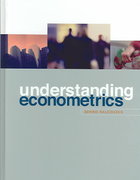Question
During class on the date shown in the Detailed Calendar at the course web site, we will have an in-class permit trading exercise. As preparation
During class on the date shown in the "Detailed Calendar" at the course web site, we will have an in-class permit trading exercise. As preparation for that exercise, please review the information in Section 1 and answer the questions in Sections 2 through 5.
1 Market Structure
Participants: The firms are assigned a number. Odd numbered firms differ from even numbered firms in their abatement costs. Otherwise firms are the same.
Output market: The firms operate in the same country. Each firm produces the same product. Total home country production is small relative to global production so the firms take the market price of 40 per unit of output as given.
Production: Each firm's production cost associated with Q units of output is C(Q) = Q up to a capacity of 20 (all firms have the same cost function and same capacity constraint). Marginal cost is constant at 1.
Pollution: Each unit of output produces one unit of pollution.
Pollution abatement: A firm can reduce its emissions by investing in pollution abatement. For odd-numbered firms, the cost of reducing pollution by A units is C A odd(A) = 3A2 . For even-numbered firms, the cost is C A even(A) = A2 . Thus, oddnumbered firms have relatively higher abatement costs than even-numbered firms. Marginal abatement costs are 6A for odd-numbered firms and 2A for even-numbered firms.
Simplification: There are the same number of odd and even firms. Thus, you can assume that there are only two firms, Firm 1 and Firm 2, to answer the questions that follow.
2 No regulation Suppose there is no environmental regulation. What quantity will each firm produce? How much will each firm choose to abate? What will be the profit of each firm?
3 Emission cap: Suppose the government of the firms' home country institutes a cap on emissions of 10 units, with each unit of pollution in excess of this limit fined at a rate of 70/unit. A firm's pollution associated with output Q is Q A. To avoid the fine, a firm must have Q A 10. What quantity will each firm produce? How much will each firm choose to abate? What will be the profit of each firm?
4 Cap and Trade Consider a cap-and-trade policy whereby the government of the firms' home country issues tradable emission permits to the firms. Each firm is issued 10 permits. Each permit allows a firm to emit one unit of pollution. Firm's can buy or sell permits. A firm's production must equal permits on hand after trading plus abatement. A firm is fined $70 for each unit of production that exceeds permits on hand plus abatement. 2 Consider five different production choices 1. Q1 = 14, Q2 = 10 2. Q1 = 10, Q2 = 14 3. Q1 = 16, Q2 = 20 4. Q1 = 20, Q2 = 16 5. Q1 = 20, Q2 = 20 For each of the five production choices above answer the following 1. Will Firm 2 sell to Firm 1 or will Firm 1 sell to Firm 2? 2. How many permits will be sold? 3. What will be the permit price? 4. How much will each firm choose to abate? 5. What will be the profit of each firm?
Step by Step Solution
There are 3 Steps involved in it
Step: 1

Get Instant Access to Expert-Tailored Solutions
See step-by-step solutions with expert insights and AI powered tools for academic success
Step: 2

Step: 3

Ace Your Homework with AI
Get the answers you need in no time with our AI-driven, step-by-step assistance
Get Started


